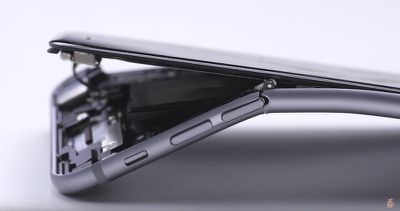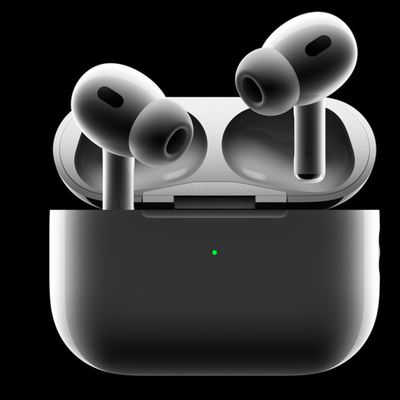Apple Addresses 'Bendgate' By Strengthening Weak Points of 'iPhone 6s' Shell
Following the launch of the iPhone 6 and iPhone 6 Plus last September, some users began experiencing issues with the larger-sized smartphones bending in their pockets after normal day-to-day usage. The issue -- informally known as "Bendgate" -- became widespread after a video test revealed it does not take much force to cause a slight curvature in the device.

iPhone 6 Plus bend test by Lewis Hilsenteger of Unbox Therapy
Apple later commented that an iPhone 6 Plus bending under normal use is "
extremely rare," adding that it had received only nine complaints from customers about the issue at the time. The company said the iPhone 6 and iPhone 6 Plus feature a "precision engineered unibody enclosure" constructed from 6000 series anodized aluminum and "stainless steel and titanium inserts to reinforce high stress locations" on the devices.
Nevertheless, it appears that Apple engineers have tweaked the design of the so-called "iPhone 6s" by strengthening the weak points of the smartphone's rear shell. A new YouTube video shared by Unbox Therapy shows that the areas around the Home and volume buttons on the "iPhone 6s" appear to be notably thicker -- 1.9mm versus 1.14mm -- suggesting that Apple's next iPhones could be less susceptible to bending under normal usage.
Interestingly, the video shows that the "iPhone 6s" rear shell is also slightly lighter, despite having a thicker shell at certain weak points. The purported "iPhone 6s" rear shell weighs in at 25 grams, compared to 27 grams for the iPhone 6 rear shell, suggesting that Apple could be using a new material such as the rumored
7000 Series anodized aluminum for its next-generation smartphones.
Popular Stories
The long wait for an Apple Watch Ultra 3 appears to be nearly over, and it is rumored to feature both satellite connectivity and 5G support.
Apple Watch Ultra's existing Night Mode
In his latest Power On newsletter, Bloomberg's Mark Gurman said that the Apple Watch Ultra 3 is on track to launch this year with "significant" new features, including satellite connectivity, which would let you...
Apple's next-generation iPhone 17 Pro and iPhone 17 Pro Max are just over two months away, and there are plenty of rumors about the devices.
Below, we recap key changes rumored for the iPhone 17 Pro models.
Latest Rumors
These rumors surfaced in June and July:Apple logo repositioned: Apple's logo may have a lower position on the back of the iPhone 17 Pro models, compared to previous...
The iPhone 17 Pro Max will feature the biggest ever battery in an iPhone, according to the Weibo leaker known as "Instant Digital."
In a new post, the leaker listed the battery capacities of the iPhone 11 Pro Max through to the iPhone 16 Pro Max, and added that the iPhone 17 Pro Max will feature a battery capacity of 5,000mAh:
iPhone 11 Pro Max: 3,969mAh
iPhone 12 Pro Max: 3,687mAh...
Apple's position as the dominant force in the global true wireless stereo (TWS) earbud market is expected to continue through 2025, according to Counterpoint Research.
The forecast outlines a 3% year-over-year increase in global TWS unit shipments for 2025, signaling a transition from rapid growth to a more mature phase for the category. While Apple is set to remain the leading brand by...
AppleInsider's Marko Zivkovic today shared a list of alleged identifiers for future Mac models, which should roll out over the next year or so.
The report does not reveal anything too surprising, but it does serve as further evidence that Apple is seemingly working on new models of every Mac, including the MacBook Air, MacBook Pro, iMac, Mac mini, Mac Studio, and Mac Pro.
Apple is...
The upcoming iPhone 17 Pro and iPhone 17 Pro Max are rumored to have a slightly different MagSafe magnet layout compared to existing iPhone models, and a leaked photo has offered a closer look at the supposed new design.
The leaker Majin Bu today shared a photo of alleged MagSafe magnet arrays for third-party iPhone 17 Pro cases. On existing iPhone models with MagSafe, the magnets form a...


















